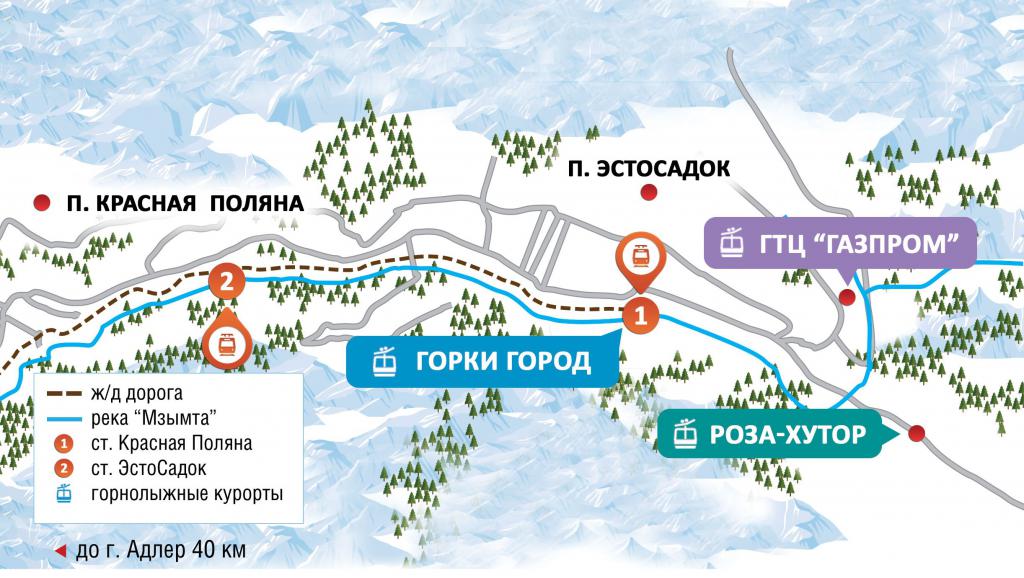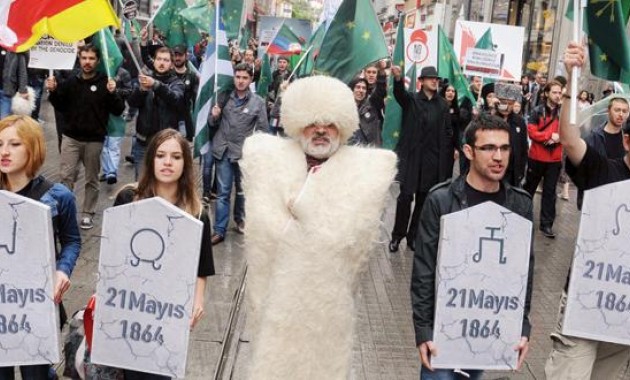Krasnaya Polyana is the history of our Russia. This is an urban village in the Adler region, which has become a popular resort among Russians after the 2014 Olympics. But this is a place with a long history. This is evidenced by excavations and finds of objects of ancient people.
Krasnaya Polyana in antiquity
It is located at the foot of the Caucasus Mountains. Climatic conditions are favorable for flora and fauna. The history of Krasnaya Polyana began 4000-6000 years ago. This is evidenced by dolmens near the village. In ancient times, these lands were not famous for fertility, but the abundance of fruits, berries, nuts attracted people.
Archaeological studies of the area have uncovered primitive man sites, tools made of bones and wood indicate that this area has been inhabited by humans for a long time. Burials and tombs were found in the vicinity of the village.

According to the story, in Krasnaya Polyana there was an aul of a mountain Abkhaz tribe - the Sadz, they gave the village the name Artkuaj. Then the mesozui (meadweed) settled, and the village was renamed Kbaad. The remains of fortresses preserved near the village testify to the settlement of these and other tribes. Honeymen collected honey from mountain bees and from the Turks exchanged it for fabrics and spices. Indigenous people knew the foundry, used clay for dishes and carved drawings on stone. This is evidenced by objects found at the excavation site. Highlanders hunted animals, grazed cattle and were excellent riders. They were engaged in agriculture, cultivated gardens, planted fruit branches of trees. Thanks to them, Krasnaya Polyana is famous today for its wild fruit orchards.
Population history
The historical event took place in Krasnaya Polyana on May 21, 1864. At this place came 4 detachments of Russian troops and the commander in chief of the Russian army, Mikhail Nikolayevich Romanov. On this day, a parade was held in honor of the end of the Caucasian war and a moleben was served. Aul Kabaade was the last point from which the mountaineers did not want to leave and defended their lands to the last. At the request of the commanders, they decided to name the village of Romanovsk in honor of the prince, and the place was called Tsarskoye. In 1866, an army battalion was landed here with the goal of evicting the local population from the mountains. The history of the resort Krasnaya Polyana is really very interesting.
In 1878, the Greeks from the Stavropol province, finding out about these lands, crossed the Pseashkh mountain pass and went to the Kbaad aul. Thirty families settled in the area. The lack of roads to the village for a long time allowed them to live apart.
After 8 years, 30 families from Estonia came to this place and founded nearby Esto-Sadok farm. In 1891, approximately 200 people lived in Krasnaya Polyana, in the future the population only grew, most of them consisted of Greeks, but the Slavs began to come. In 1899, the village received the status of the urban settlement of Romanovsk.
Krasnaya Polyana in the 20th century
At the beginning of the 20th century, wealthy nobles began to buy land and build cottages. Some houses of that time stand today, but there was no development in the village until the end of World War II. In 1950, the settlement received the status of a working village. According to history, Krasnaya Polyana entered Sochi in 1961, the population was about 3 thousand people.
In 2017, the population of the village is almost 5 thousand people and is represented by many nationalities.
Name history
The history of the name Krasnaya Polyana began in the 19th century. Aul Kbaade was renamed the village of Romanovsk, but the name did not take root. There are two versions of why the name appeared.
- The immigrant Greeks, having first entered these lands and seeing a red-brown fern covering the slopes of the mountains, exclaimed: “What a red clearing!” This opinion is shared by most historians.
- "Red" previously meant "beautiful." It is difficult to disagree with this theory; the beauty of this place cannot be conveyed. On topographic maps of 1866 (before the arrival of immigrants), the area was already called Krasnaya Polyana.
Modern resort development
Krasnaya Polyana is a tourism development center in the Krasnodar Territory. The history of the resort began recently, but in a short time it became popular in the winter and summer. A mild, humid climate allows snow to lie on the mountain slopes from autumn to spring. The first ski resort was opened in 2007 - Gazprom. In 2008, the Mountain Carousel complex joined, and in 2011 the Rosa Khutor ski resort began its work. All complexes have modern equipment, cable cars and high-quality tracks.

In 2014, for the first time in the history of Krasnaya Polyana, the Winter Olympic Games were held in the following sports: skiing, snowboarding, freestyle. Thanks to the federal program, skiing in the Krasnodar Territory received a powerful development. The tourist destination is actively developing in the summer, excursions allow you to see the beauty of this place. Hotel complexes, shopping centers, sports facilities adorn a small village. Wireless internet access points are installed throughout the area. The tourist area is connected to the airport and the city of Sochi by road and rail, through which passengers are transported by the Lastochka electric train.
Agricultural development
Agriculture is developed, there are several famous honey apiaries. Honey is delivered far beyond the village. A huge amount of flowers grows here. Chestnut honey is rare, its world volumes are small, but you can try it in the village. A new species of bees has been bred in the Caucasus - the gray Caucasian. Its feature is the ability to extract honey even at low temperatures. The Krasnaya Polyana bee was specially bred by local breeders for collection.
Culture and attractions of the resort
The history of the village of Krasnaya Polyana is inextricably linked with local monuments, both natural and man-made. One of the most interesting sights is the Akhshtyrskaya cave, its depth is 150 meters. It has many labyrinths and branches, so you need to go on an excursion only accompanied by a guide. Nearby in the lakes you can go fishing, trout, pike perch, crucian carp and other types of fish are found here.
The hunting royal house is located at an altitude of 1020 meters above sea level, in the 19th century only members of the royal family could hunt in the forests, part of the land around the house was considered a reserve. Dolmens of this area remind us that the first people lived here already 4000-6000 years ago.
Monument "Bronze Soldier" - the modern history of Krasnaya Polyana. In Estonia, this monument was located in the center of Tallinn, the authorities decided to transfer it to the cemetery. This aroused the indignation of the Estonian community, they created a copy of it and put Esto-Sadok in a settlement of Estonians in Russia.
Achipse Fortress - famous dilapidated fortresses erected in the Middle Ages, are mute witnesses of a warrior between settlements. There are beautiful natural monuments in Krasnaya Polyana:
- waterfall "Girl's Tears" 13 meters high;
- Polikarya waterfall - the highest in Europe reaches a height of 70 meters;
- Brothers waterfall, located at an altitude of 2000 meters above sea level.
Genocide
The day when Prince Michael served a moleben in the aul of Kbaad became an official day in memory of the victims of the Caucasian war. In Karachay-Cherkessia and some other republics, May 21 is an official day off. The North Caucasus was conquered that day, the mountaineers were forced to move to other regions under the pressure of the Russian army, thousands of people moved to Turkey and the Middle East. As a result, communities of Circassians, Abazins, and Abkhazians appeared in these countries.

The military events of those days were a tragedy for local highlanders, a large number of people died. Deforestation to fight partisans is a real disaster for the environment. Several plague epidemics claimed the lives of many soldiers on both sides. The Caucasian war is a confrontation between two cultures, two civilizations. Progressive Russia and the traditions of the Caucasus did not understand each other. Russia came with good intentions, but the people of the Caucasus did not need them. The history of genocide in Krasnaya Polyana has become a symbol of war in the Caucasus. The world after the war was very fragile, it was supported by Cossack troops, ready at any moment to prevent bloodshed. Despite the Caucasian war, the peoples who inhabited the North Caucasus and Transcaucasia had equal rights, like the rest of the population of Russia. Nevertheless, these events settled for a long time persistent Russophobia among the inhabitants of the Caucasus.